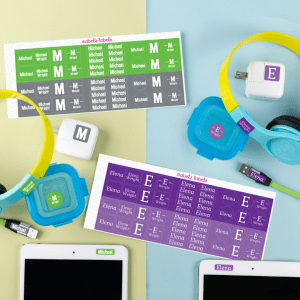Blended families face plenty of challenges. Differing parenting styles, new parent/child relationships, and intense logistics complicate everything about daily life. Blended families encounter lifestyle obstacles that other families simply do not.
But you can overcome these challenges, it is possible to organize a blended home. Children and parents alike can work together to navigate the emerging family landscape. Every tool you can put on your belt is worth the time and investment.
A well-organized, mindful home helps a family tackle those challenges by reducing stress, minimizing distractions, and literally improving their mental health. The science is clear on this: a clean, organized living space can enhance your relationships, while a cluttered and chaotic home makes everything harder.
Tips to organize your blended household:
-
Make a plan… together.
Blended families often start from different places regarding organization. Do you keep your keys, wallet, and backpacks in the same place? Where do dirty clothes go until you wash them? What will you do with duplicate stuff? An antique credenza might be crucial furniture to one family while the other just considers it a clutter collector.
Avoid assumptions and develop a unified, collaborative plan.
Creating this plan could take a long time and become frustrating, but you’ll avoid tons of miscommunication by thinking through your organizational strategy. Talk to each member of the family and be certain that
everyone gives input.
Start by designating some goals and principles.
Are your goals to maintain a debris-free floor or ensure that laundry is always done? Agree about what you want to accomplish. That forms your road map and shapes your plan. Take the time to address each person’s concerns and preferences so that minor issues don’t become enormous problems later.
Mentally divide your space into smaller sections, allowing you to focus on one room or area at a time. Work in small steps to avoid feeling overwhelmed. Marking an area “finished” could help keep you motivated.
-
Identify communal versus individual space
Respecting personal space, in both a metaphorical and literal sense, swiftly becomes crucial to a blended family. Personal areas provide each family member with a sense of security and reinforce individual personhood. If absolute privacy is impossible, work doubly hard to reinforce boundaries around storage units and “alone-time spaces.”
You can still create individual agency, even if siblings are forced to share a room for practical reasons. Buy each child a foot locker and forbid anyone but the owner from opening it. Label the ownership of each one clearly. Establish that there’s no talking to someone who is in their bed, as that’s personal time. You can even hang curtains around the bed to provide a sense of separation.
Balance those individual spaces with communal areas.
The dining room table, living room, and kitchen, for example, should be areas where the family comes together and bonds over games, food, and conversation. No individual can dominate that space; it should be a gathering place for the entire family.
-
Be specific and label where things belong.
Each belonging needs a designated place, and it needs to be labeled. This tactic minimizes arguments about toys, tools, and clothing being left out and not put away. If a label on a shelf proclaims, “Hair Brush Here,” it’s difficult to argue you didn’t know where to put it.
Children often feel tempted to drop backpacks and kick off shoes with wild abandon when they get home from school. Labeling cubbies and lockers reduces the mental load of tidying. The kids will be able to see exactly where to put away their stuff.
Labels serve another purpose. They document family agreements. Once you’ve agreed that a category of dish goes on a particular shelf, stick a label on it. Restaurants and businesses have been doing this forever.
We love this Split Name Label Pack. It’s the most simple way of getting multiple kids labels that they can use to label their own items, their lockers, and personal items that they don’t want to share. Not only does this make the household run smoother when everyone is responsible for their own things, but it also stops many sibling rivalries over who owns what.

-
Make a calendar your best friend.
Create a few shared calendars for your family. Separate your cleaning routines onto their own calendar. Another calendar can manage drop-offs and pickups. A third calendar will organize due dates and critical days; you could put doctor appointments on this one, or create a whole separate calendar. Create as many as you need as long as your family collaborates and agrees.
You organize all these dates on different calendars to avoid information overload. Never underestimate how easy it is to overwhelm someone with data, especially a child. Keep the information separated, bite-sized, and manageable.
-
Flexibility and accountability.
Flexibility and accountability might feel like opposite ends of a spectrum, but they both revolve around a central point: respect for the other members of your family.
Be accountable by documenting compromises and decisions. You could keep a notebook with important agreements, like a particular process to paying bills or a decision about what gets stored in the garage. A quick email could suffice and you should definitely stick a label on anything you can. The goal is to create a touchstone you can refer to. Clarity makes everything easier.
Maintain your open mind and willingness to accommodate, though. Minds change and preferences evolve while you’re creating your organized, uncluttered home. You’ll want to be flexible with family members but also yourself. There’s no telling what you’ll discover about your goals while going through this process.
Final Thought
You’ll see that respect came up a lot amidst this list. That’s on purpose. Respect and communication will be the foundation of your organization journey, just like they’re part of the foundation of your family. Creating this big, blended family won’t always be easy, but it should always be rewarding.

